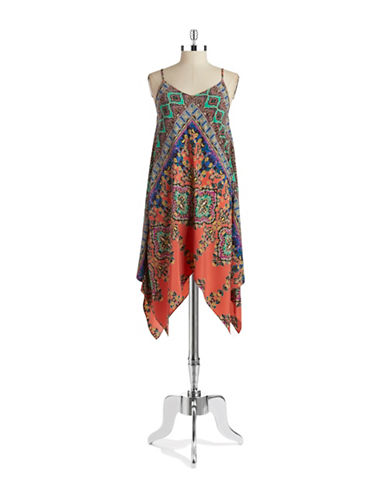
According to the complaint, Lord & Taylor launched a new Design Lab collection in the fall of 2014. As part of its marketing campaign, Lord & Taylor included a comprehensive social media campaign (“product bomb”) for the end of March 2015. The campaign consisted of Lord & Taylor-branded social media posts and the use of a team of “influencers,” all focused on one article of clothing—the Design Lab Asymmetrical Dress.
Strike One: Lord & Taylor gifted the dress to all 50 influencers and paid them between $1,000 and $4,000 to post photos of the influencers wearing the dress. Lord & Taylor contractually obligated the influencers to use “@lordandtaylor” Instagram designations and the “#DesignLab” hashtag in the photo caption. However, Lord & Taylor did not require, contractually or otherwise, that the influencers disclose in their posts that Lord & Taylor had compensated them.
Strike Two: In advance of the “product bomb,” Lord & Taylor reviewed and approved each of the influencers’ posts to make sure the required campaign designations and hashtags were used. None of the posts reviewed, however, included a disclosure that the influencer was being compensated or that the post was part of a Lord & Taylor advertising campaign. Lord & Taylor personnel that reviewed and approved the posts did not edit the posts to add such disclosures.
Strike Three: The product launch also included strategic placement of Lord & Taylor edited Instagram posts and articles in on-line fashion magazines. The complaint includes details regarding one such magazine, Nylon. Nylon Magazine posted a photo of the paisley dress with a Lord & Taylor-edited caption on its Instagram account during the product bomb weekend. Lord & Taylor paid for, reviewed, and pre-approved the post, but none of that was disclosed. Nylon Magazine also ran an article about the Design Lab collection, and Lord & Taylor paid for, reviewed, and pre-approved the article. None of that was disclosed either.
At first, the campaign was a home run attracting tremendous traffic and attention on Instagram, and the dress sold out. Ad industry publications, however, quickly noted that the campaign seemed to run afoul of the FTC’s rules on disclosing paid endorsements. The FTC appears to have thought so too.
In the settlement announced with the filing of the complaint, the FTC required that Lord & Taylor in future advertising: 1) not misrepresent the independence of endorsers; 2) clearly and conspicuously disclose material connections between Lord & Taylor and any endorsers; 3) not misrepresent that a paid ad is an independent statement of opinion; and 4) institute a compliance system to educate, monitor, review, and discipline endorsers on the requirements of the order.
The complaint and order provide a good batting order of what not to do and what to do to avoid FTC scrutiny. Beyond that, as in the FTC’s case against Machinima, when the business press comments that a social media ad campaign may be over the line, how a company reacts is critical. In Machinima, Microsoft and the advertising agency were able to resolve the FTC’s concerns through a closing letter due in part to how they responded to the campaign and steps they took before the FTC arrived to make sure there was not a repeat performance. Here, the case resulted in an order. So, to avoid being out at home, pay attention to what your influencers are doing, and nip bad behavior in the bud. Play ball!